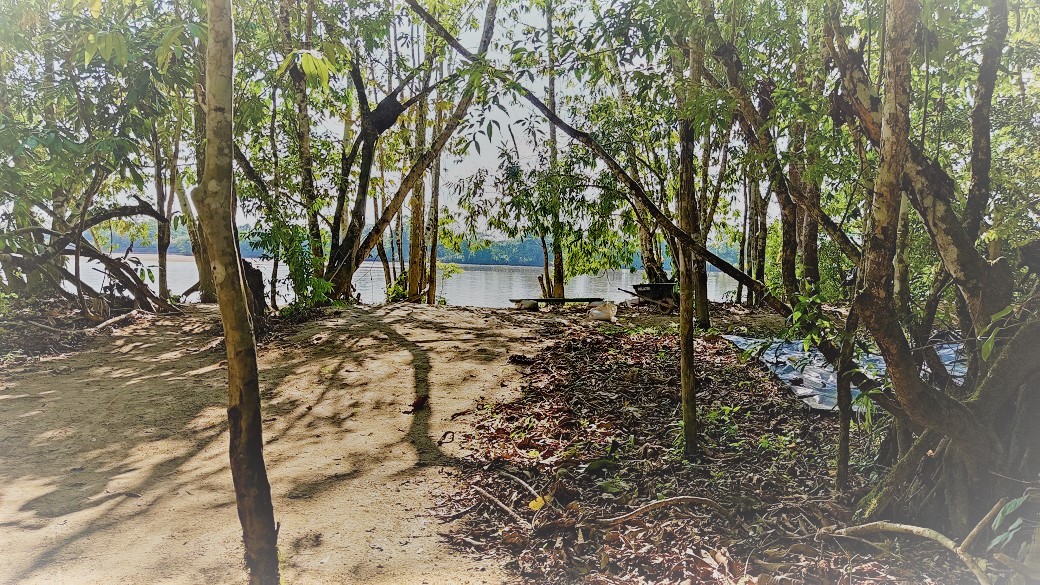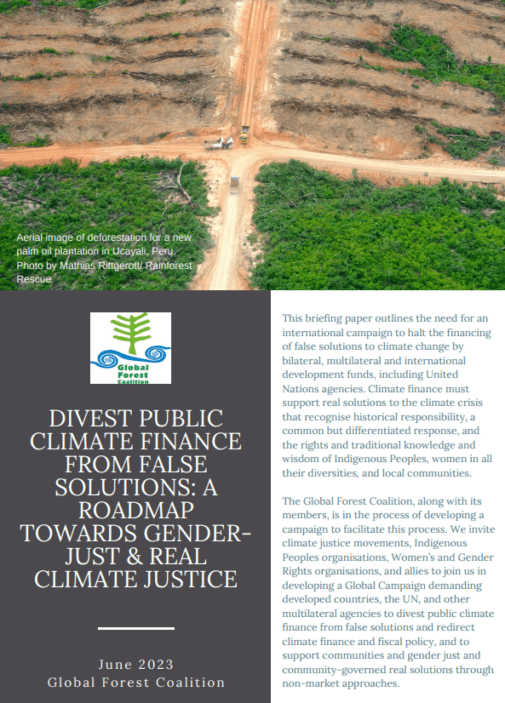Genetically Engineered Trees and Glowing Synthetic Plants? No Thanks
Genetically Engineered Trees and Glowing Synthetic Plants? No Thanks
This week in Asheville, N.C., the IUFRO “Tree Biotechnology” conference will meet. And the attendees will be met: by protests. Public opinion is unequivocally opposed to genetically engineered trees. When the South Carolina-based tree engineering company, ArborGen recently applied for deregulation of their freeze tolerant eucalyptus, APHIS responded by filing a “notice of intent” to conduct an environmental impact statement, and opened up for public comments on ArborGen’s petition. The comments the received were overwhelmingly negative by a vast majority.
Similarly, when ArborGen filed for permission to field test their frankeneucalyptus back in 2010, more than 17,500 comments opposing the tests were submitted, while only 39 were favorable. In spite of the abysmal approval ratings, USDA granted permission to field test the trees and then again granted permission to allow some plots to go to flower. A lawsuit was filed against USDA by a coalition of groups (Global Justice Ecology Project, Dogwood Alliance, Center for Food Safety, Sierra Club and Center for Biological Diversity). In an article published in Biomass Magazine, spokesperson for the Biotechnology Industry Organization credited the suit as “… a hindrance to biomass development, as they discourage investment… It is creating a huge barrier.”
The International “Campaign to STOP Genetically Engineered Trees”, which has called for an international ban on commercial release of GE trees cheered their effectiveness as a “barrier.”
Opposition to GE Trees makes sense for many reasons. First and foremost, there is little basis for confidence that these trees will “behave” as their makers proclaim. Like Frankenstein, they are likely to cause trouble. GE food crops have already taught us some lessons, from unanticipated problems. Those include the failure of engineered traits to be expressed consistently, and cross-contamination with wild relatives and evolution of resistant weeds and pests (in the case of herbicide resistance traits). The bottom line is that nature is messy and unpredictable. Things do not happen “out there” as they do in test tubes in sterile-controlled laboratory settings. Genetic manipulation of trees raises particular problems because trees live for a long time, undergo many physiological changes over their life span, and respond to changes in the environment (especially with global warming). They spread their seeds and pollen over vast distances and can potentially grow far from where they were initially planted. Some trees become sick, some may become invasive, some may be left forgotten in abandoned fields and woodlands to carry on, evolving into the future from whatever bizarre and unprecedented “starting state” the engineers constructed. Once they run amok, there will be little or no chance of going back. ArborGen’s tree engineers tell us they have inserted genes into the trees that will render them incapable of reproduction. But this simply cannot be guaranteed to remain reliable and eucalyptus can stump sprout, and reproduce vegetatively. They has already become invasive in some places.
So why has USDA gone ahead, in spite of clear opposition, to permit field testing, flowering of ArborGen’s frankeneucalyptus? Perhaps in part it is a response to the fact that ArborGen has succeeded in placing key personnel within positions in agencies such as the USDA and DOE where these decisions are made. Also, it is clear that the entire awesome weight of the biomass juggernaut comes into play. Subsidies are flowing into the construction of hundreds of bioenergy “renewable energy” projects, including plans to convert massive coal plants to burn biomass, efforts to convert wood into ethanol and other transport fuels, as well as a suite of other biomass based chemicals and products. The demand, and the potentially massive profits to be made, are altogether clear.
The Obama Administration recently released its “Blueprint for a New Bioeconomy” which would provide various additional forms of support for commercial and industrial bioenergy, and also seeks to “streamline” permitting processes for new biotechnologies, to help speed the bioeconomy along on its merry way. Unfortunately, that “merry way” is leading us headlong over the edge of a cliff. The ever-escalating demand for mind-boggling massive amounts of wood and crops, (and the land and water resources needed to grow them) to supply this “bioeconomy” is already clearly chipping away at both food markets and biodiversity. The U.S. mandate for ethanol, for example, has nearly 40 percent of the corn crop going to refineries rather than groceries. Industrial corn monocultures are expanding, obliterating biodiverse conservation reserve program (CRP) lands, and wreaking havoc with global grain markets, causing price spikes that are driving poor people into hunger and rich people into commodity and farm land speculation. These and other problems, (by now well-documented) and including land grabs, food price spikes, deforestation, depletion of aquifers, increased use of fertilizers and agrichemicals — are the result of biofuels’ 3 percent contribution to global transport fuels. Worse still, greenhouse gas emissions have not been reduced as a result of biofuels; in fact they appear to have only made matters worse.
ArborGen’s motto is “more wood on less land.” They claim that their fast growing frankeneucalyptus will result in less land conversion. But they need a reality check. Increasing productivity does not result in less land being converted. Reducing demand does. Palm oil is a case in point. Increased productivity of palm oil trees has not resulted in less land conversion. Demand just keeps growing, and is driven by other (mostly market and policy) factors, including price (which tends to go down as productivity increases). In the case of bioenergy, mandates and subsidies bolster demand for wood chips and pellets, which is on track to expand massively. That is precisely what ArborGen and the other tree biotechnology companies are banking on.
In the southeastern U.S., where ArborGen hopes to grow frankeneucalyptus is already being targeted by European energy companies, like Drax and RWE, who are seeking millions of tonnes of wood pellets to burn in their coal-conversion facilities. Subsidized as “renewable energy” they stand to profit from partly substituting wood for coal in their facilities. In fact they are being forced to do so or close down operations altogether, in light of new regulations on sulfur dioxide. Adding wood to the mix does in fact lower sulfur dioxide emissions, even as it increases other emissions and prolongs the operations of these old polluting facilities. These European energy companies are establishing their own pellet production plants in Georgia, Louisiana, Mississippi and elsewhere to export back across the Atantic. The U.S., meanwhile, has its own expanding demand as well, with hundreds of new biomass burning “renewable energy” facilities sprouting up around the country in response to government supports that continue to indiscriminately support burning trees as “clean, green and renewable.”
That we are even engaged in this debate over growing genetically engineered trees to supply this misguided, manufactured demand, is absurd. We know full well that protecting and nurturing natural forests and ecosystems is our best bet for stemming the tide of environmental destruction. Yet, instead we are considering paving over the landscape with genetically engineered, water-sucking, flammable, invasive eucalyptus? Perhaps this is an outgrowth of our obsession with technology, which we somehow seem to trust more than nature. Biotechnologists don’t think twice about messing with the DNA of trees and animals — as if the processes of evolution over millions of years are somehow irrelevant to the fabric and integrity of life. Our fascination is fed by great films like Avatar, which thrill us with the sense of technology’s “possibilities.” Symptomatic of this fascination: A recent media blitz was stirred to life over a project that aims to use synthetic biology to create glowing plants. Presented as a potential replacement for light bulbs, the proposal is to use install gene sequences that will confer bioluminescence on such common plants as Arabidopsis, a very common mustard family plant widely distributed throughout north America. Having hired a PR firm to handle the project, the media presents this as an oh-so-cool idea. Not all of us agree.
There is ongoing serious debate about regulation of synthetic organisms, and this ‘DIY” project appears set to sidestep. A letter to USDA and Kickstarter (where the campaign is seeking to raise funding) states that the project should be halted as it “will likely result in widespread, random and uncontrolled release of bioengineered seeds and plants produced through the controversial and risky techniques of synthetic biology.” For the techno-obsessed, ideas are spawned, scientists get grants, become “experts” and build careers, patents are filed, business ventures launched, and PR firms hired, all before the fundamental questions are raised: Is this environmentally safe, responsible and fair?
As public response to GE trees reveals, however, the average person retains some common sense. We realize that while Avatar was fun, it is in many cases better to keep science fiction, fictional. Sure, there is no question that some technological advances have brought great benefits. But there are boundaries. Some things are beyond our understanding and our ability to control. We know that all of life really is ultimately interconnected — so that messing with any part of the system will have ramifications throughout. This means that some things — tree genomes among them — should remain sacred and inviolable.
Volumes have already been written elaborating a long list of concerns about GE trees. More importantly, what most of us know instinctively is that GE trees (and glowing mustard plants) are quite simply, an unacceptable violation.







